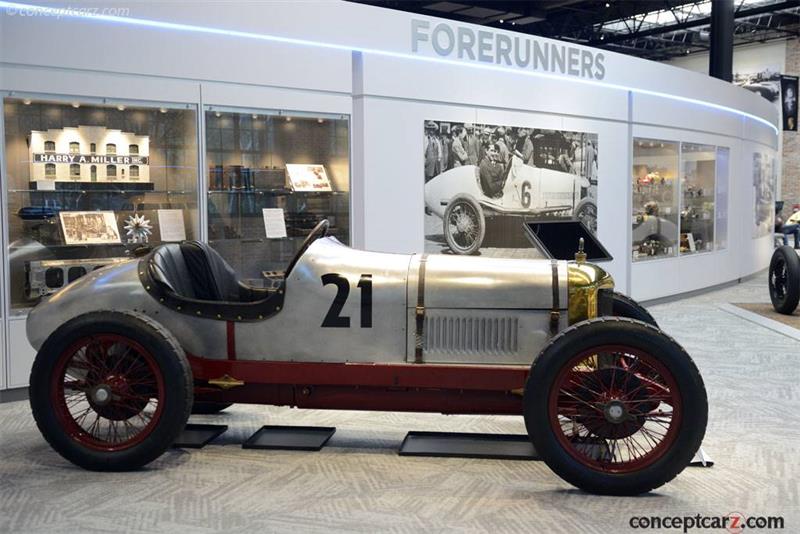Harry A. Miller created some of the more advanced designs and engineering marvels of the early 1900s. He was born in Menominee, Wisconsin, in 1875. His father's German surname was Mueller; when Harry was old enough, he changed his last name to Miller, to simplify the spelling. He left school at age thirteen to pursue a job in the local machine shop where he repaired steam engines and other mechanical devices.
Roadster
Chassis #: TNT1
Engine #: 8M8
View info and history
Auction entries : 1By the early 1900s, he and his wife were living in San Francisco. While there, he created a simplistic car without a clutch or gearbox. He later created and patented a type of spark plug. This patent was later sold to the Peerless Motor Car Company. With the profits, he left California and headed to Toledo, Ohio in pursuit of a career in the automotive industry. By 1908 he was a riding mechanic in the Vanderbilt Cup Races on Long Island. The car had disappointing results, and he would never again get into the cockpit of a racer for competition purposes. The early 1910s were blissful for the master engineer. He managed to secure investors to help with his endeavors. His Master carburetor, which he had first built in 1907, was very popular and would remain a widely used item until the early 1920s. This success in the carburetion business led to other automotive endeavors. When Bob Burman, a race car driver with some fame, requested Miller to build him a replacement engine for his damaged car, Miller accepted. The engine was originally created by Peugeot; among the modifications made by Miller were aluminum alloy pistons which dramatically reduced the overall weight while increasing its strength and durability. With the newly tuned engine, Burman won the 200-mile Southwest Sweepstakes Road Race at Oklahoma City and many other victories. 
Roadster
Chassis #: TNT1
Engine #: 8M8
View info and history
Auction entries : 1Happy with the success of the engine, Burman requested another engine. He would never take delivery of the unit, as he was tragically killed when he lost control of his car due to a blown tire. Both Burman and his riding mechanic were killed when the car hit two utility poles and a parked car. The race car was thrown over 45 feet.By the mid-1910s, Miller was approached by an aviator named Lincoln Beachey, who requested an engine built for aviation purposes. Together, they created a six-cylinder unit though it never reached major production, as Beachey was killed in a plane crash.The next major project for Miller came in 1917 when he created a new race car for Barney Oldfield. Oldfield had been using a Delage. The result was the 'Golden Submarine,' named due to its aerodynamic, teardrop, and enclosed body. The car was a very unusual design for the United States at the time. Under the hood was an engine that was truly unique. It had a peak RPM level of 4000, which was incredible for its day. Most engineers used larger displacement sizes to create more power, as more revolutions often meant that the durability of the engine was jeopardized. The mechanical components were not adequate to handle extreme RPM speeds. Millers' engine was an engineering marvel.
Roadster
Chassis #: TNT1
Engine #: 8M8
View info and history
Auction entries : 1Located within the enclosed shell of the Golden Submarine was a roll cage that was intended to protect the driver in the case of a crash. The enclosed top was later removed, as the driver nearly drowned during a race when it went into the infield and into water. The car had a brilliant racing career that included many successful dirt track racing endeavors. At the Milwaukee Mile, it broke every international dirt track record.De Lloy Thompson contacted Miller near the close of 1917, requesting a military aircraft engine. The two began designing a V-12 engine, but part-way through the project, Miller lost interest and began pursuing other endeavors, such as building engines for Duesenberg Motors, who had military contracts. This project never really materialized, as the war ended and the engines were no longer needed. At the close of World War I, Miller moved to Los Angeles. Another project presented itself; it was called TNT and was backed by a wealthy brewer. The goal of the project was to design and build a racing car that could also be produced as a sports model. The team consisted of Miller, Fred Offenhauser, and Leo Goosen. This dream team would be the most successful part of this venture, as financial difficulties had the project come to a halt.
Roadster
Chassis #: TNT1
Engine #: 8M8
View info and history
Auction entries : 1In 1920, the Indianapolis 500 set a displacement limitation on engines, requiring them to be no larger than 183 cubic inches or three-liters. The newly-formed Miller group created an engine for this race, called the Miller 183. They recruited the services of race-car driver, Tommy Milton. Ira Vail provided the necessary financial backing. The Miller Group-built engine had eight cylinders and consisted of technology from Peugeot, Duesenberg, and Ballot. By 1922, it was completed and ready for competition. The car was instantly successful. As a result, Cliff Durant, the son of GM founder William C. Durant, ordered six examples. The Miller-powered cars won ten races. In the hands of Jimmy Murphy, a Miller-powered car won the Indianapolis 500 with an average speed of 94.5 miles per hour. In 1923, racing officials changed the rules for the Indianapolis 500 race. The displacement size was reduced, and the number of seats allowed per car was downgraded to just one. To accommodate the new rules, the Miller Group created the two-liter, Miller 122. It had a 122-cubic-inch formula engine and would become one of the most successful engines ever created. Durant again placed an order to replace his obsolete cars. 
Roadster
Chassis #: TNT1
Engine #: 8M8
View info and history
Auction entries : 1Tommy Milton piloted a Miller 122 to another victory at the Indy 500 in 1923, averaging 100 mph. With this success, Miller's popularity continued to escalate. He was supplying more cars to more teams than any other marque. As time progressed, so did his engines, cars, and accomplishments. He would become one of the most successful race car builders of all time.
by Daniel Vaughan | Sep 2010
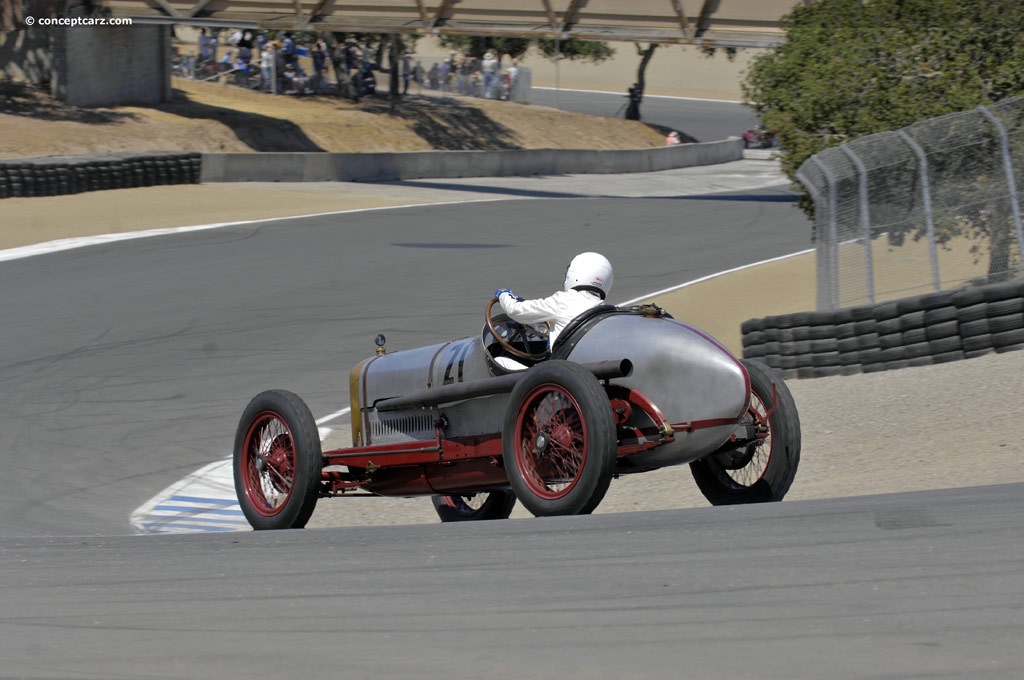
Roadster
Chassis #: TNT1
Engine #: 8M8
View info and history
Auction entries : 1
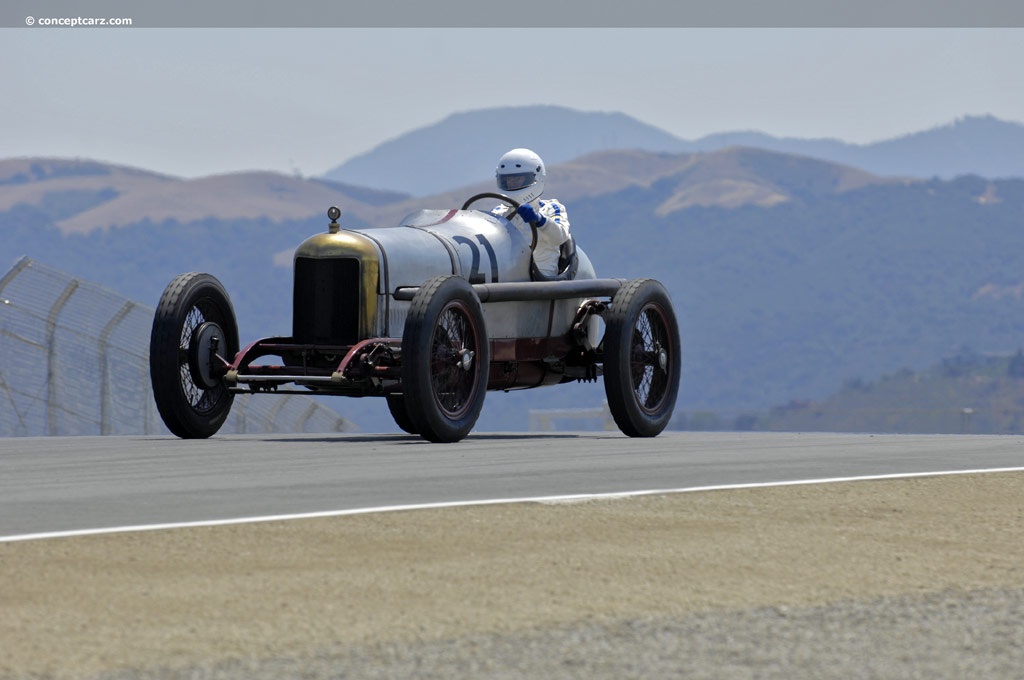
Roadster
Chassis #: TNT1
Engine #: 8M8
View info and history
Auction entries : 1

Roadster
Chassis #: TNT1
Engine #: 8M8
View info and history
Auction entries : 1
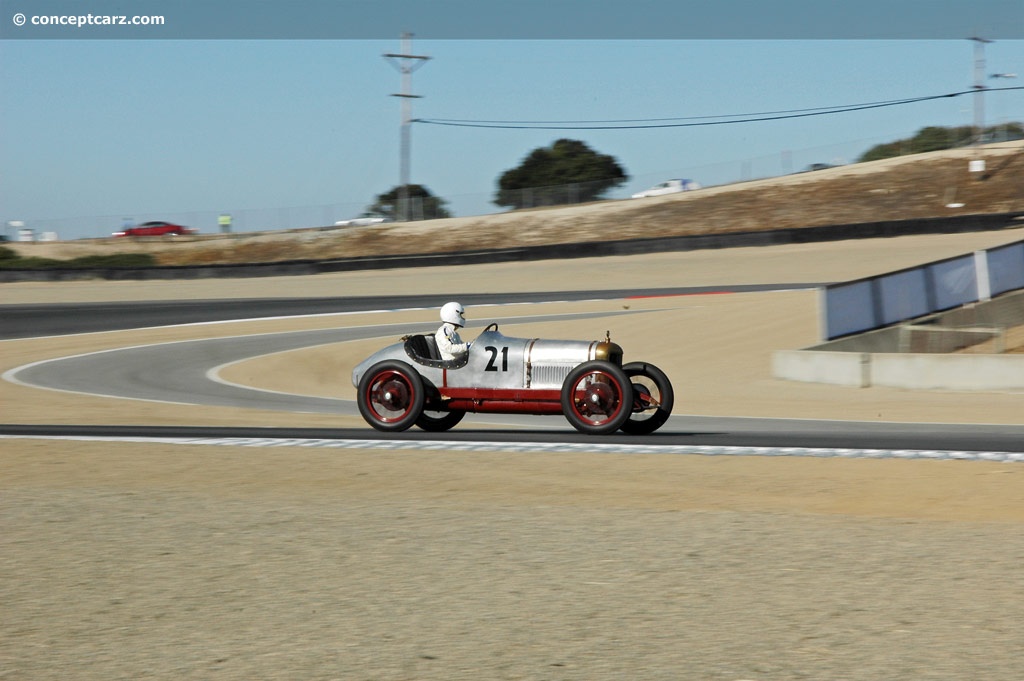
Roadster
Chassis #: TNT1
Engine #: 8M8
View info and history
Auction entries : 1
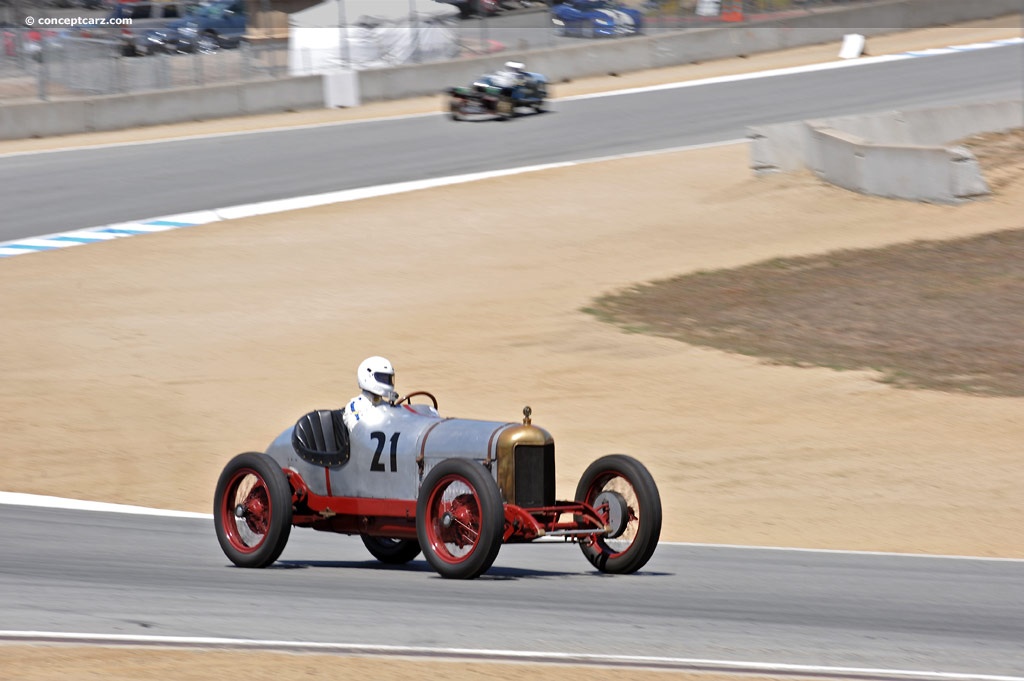
Roadster
Chassis #: TNT1
Engine #: 8M8
View info and history
Auction entries : 1
by Daniel Vaughan | Sep 2010
1919 Miller TNT Special Vehicle Profiles
Recent Vehicle Additions
Related Automotive News

JUAN PABLO MONTOYA CROWNED CHAMPION OF CHAMPIONS IN MIAMI
Colombian motor sport great Juan Pablo Montoya has won the Race Of Champions trophy for the first time at Miamis Marlins Park
Montoya prevailed after a win over Mr Le Mans Tom Kristensen, who reached his fifth ROC Grand Final
Multiple Formula 1...

Motor Sport Legends From All Over The World Prepare For This Weekend's ROC Miami
Miamis Marlins Park was swarming with legends of motor sport today ahead of this weekends ROC Miami
Champions from series including Formula 1, NASCAR, IndyCar, Le Mans, Rally X and Touring Cars put in their first practice laps of ROCs all-new tr...

DRAW FOR THIS WEEKEND'S RACE OF CHAMPIONS GETS MOTOR SPORT'S GREATS READY TO ROC MIAMI
The draw for this weekends Race Of Champions inside Miamis Marlins Park has thrown up some intriguing head-to-head encounters between some of the worlds greatest drivers
Saturdays individual race will see NASCAR champion Kyle Busch take on Form...

Dario Resta: A Man of Many Nations
Dario Resta would be born in August of 1882 in the Italian town of Faenza, not far from Imola. But though he would be Italian by birth, Resta would race under the Union Jack and the Stars and Stripes. It would not matter for what nation he drove, for...

RK MOTORS ADDS 'LEGENDS OF MOTORSPORTS' COLLECTION OF HISTORIC RACING MACHINES TO UPCOMING AUCTION
Charlotte, N.C. – October 14, 2013— Only weeks after revealing plans to auction the 1977 McLaren M26 that James Hunt drove to his final F1 victory, RK Motors Collector Car Auctions (RKMCCA) today announced that four additional iconic racing...




























